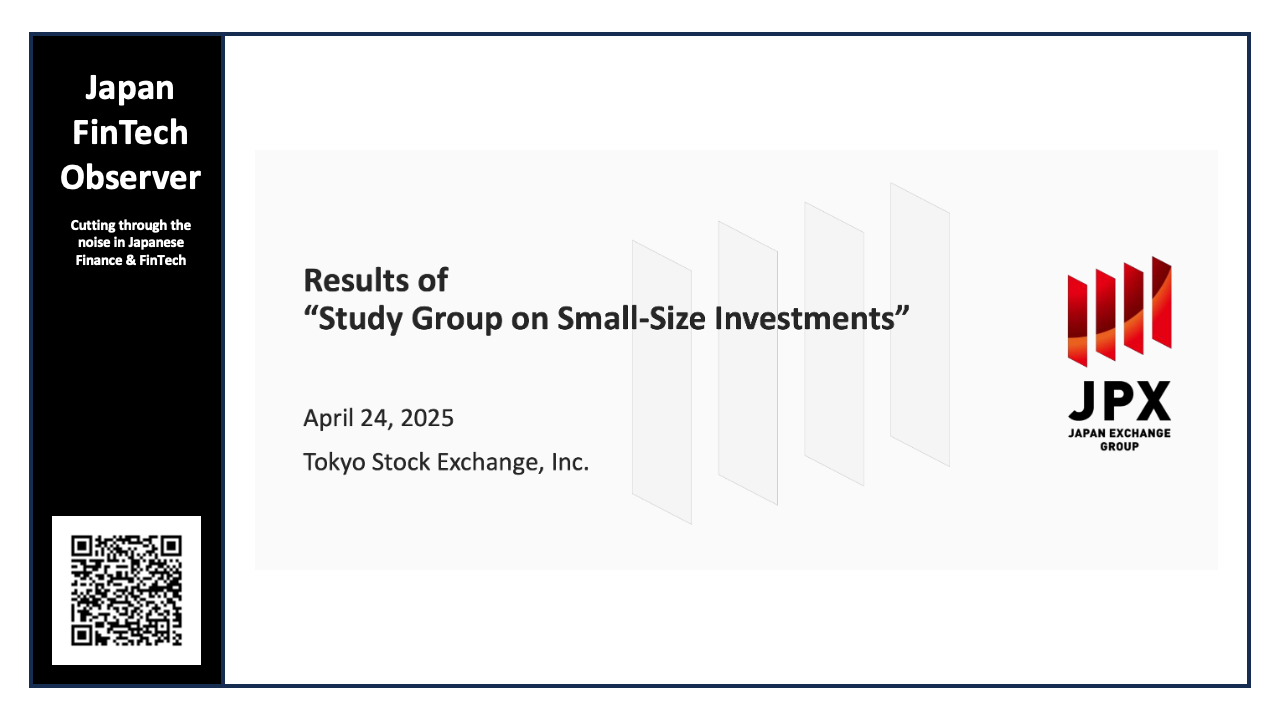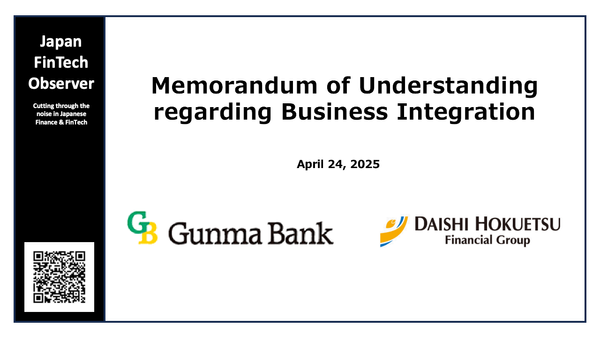Towards a More Accessible Japanese Equity Market

The pursuit of a vibrant and inclusive Japanese equity market necessitates constant adaptation and innovation. Recognizing the need to broaden investor participation and revitalize market dynamics, the Tokyo Stock Exchange (TSE) convened a study group dedicated to exploring the reduction of investment units. The study group released its comprehensive report in April 2025, providing a meticulous analysis of the significance, challenges, and strategic pathways toward realizing this crucial objective.
1. Introduction: The Imperative for Smaller Investment Units
The study group begins by articulating the rationale behind its central theme: the imperative to lower investment units in the Japanese equity market. This rationale is multifaceted, stemming from both domestic and global trends. The launch of the revamped Nippon Individual Savings Account (NISA) system in January 2024, with its focus on promoting asset building among citizens, has amplified the need to broaden the base of equity investors. The NISA system provides tax incentives to individuals who invest in stocks and other assets, creating a greater demand for accessible investment options. It is particularly important to engage the working generation, who are crucial to the long-term health of the Japanese economy.
However, compared to other developed nations, investment units on the TSE remain relatively high. This creates a barrier to entry for many potential investors, particularly those with limited capital. Reducing these barriers is seen as essential to leveling the playing field and allowing more people to participate in the potential wealth creation offered by the stock market. This echoes calls from the "Grand Design and Action Plan for a New Form of Capitalism 2024 Revised Version," which urges listed companies with high investment units to consider share splits and other measures to facilitate investment in smaller amounts. The goal is to cultivate a more democratic and inclusive investment environment.
The study group acknowledges that reducing investment units can present challenges for listed companies. Thus, the report aims to assist companies in their deliberations by examining the importance of reducing investment units, the level sought by retail investors, and the issues involved in the procedures and burdens on listed companies associated with reducing investment units. This collaborative approach ensures that any proposed solutions are not only beneficial for investors but also feasible and sustainable for the companies themselves.
2. Status of Efforts to Lower Investment Units: A Historical Perspective
The TSE has been actively working to reduce investment units for some time. Even with current trends of rising stock prices, the majority of listed companies (over 90%) have investment units below JPY 500,000. In October 2022, the TSE reiterated its request for listed companies to lower investment units.
Despite these efforts, the median investment unit on the TSE remains significantly higher compared to major overseas exchanges. For instance, the median investment unit on the TSE is JPY 131,075, while in the United States it is JPY 17,993, in the United Kingdom JPY 62,362, and in Germany JPY 9,264.
The gap highlights the need for more concerted action to bring Japanese investment units in line with global standards. The study group stresses that continued progress is crucial to attract both domestic and international investors.
3. Significance of Reducing Investment Units: A Multifaceted Benefits
The study group goes into extensive detail about the potential benefits of lowering investment units. These benefits accrue to individual investors, listed companies, and the overall Japanese economy:
- Individual Investors: Lowering investment units opens up investment opportunities to a wider range of investors. It allows people with smaller amounts of capital to begin building an investment portfolio and to participate in the growth of companies they believe in. This aligns with the broader goal of financial literacy and wealth creation for all citizens. It would become easier for a diverse range of investors to invest in individual stocks, and by supporting companies they identify with, they will be able to contribute to the growth of listed companies and, in turn, the development of the Japanese economy.
- Listed Companies
- Diversification of Shareholder Base: Lowering investment thresholds allows companies to attract a more diverse shareholder base, including individual investors who are loyal customers or brand advocates.
- Enhanced Market Liquidity: Increased participation by a wider range of investors can contribute to higher trading volumes and improved market liquidity.
- Reduced Price Volatility: A more diverse shareholder base can help to stabilize stock prices and reduce excessive volatility. By having a diverse range of investors participate in the market, it will be possible to curb excessive price fluctuations and improve liquidity.
- Acquiring Individual Shareholders: Companies can acquire individual shareholders who sympathize with the company and support its growth.
- Japanese Economy
- Promoting Japan as an Asset Management Hub: Lowering investment units makes it possible to offer a diverse range of funds to investors, even for small amounts. This enhances Japan's competitiveness as a global financial center and attracts international capital.
- Encouraging Long-Term Investment: Making it easier to invest in individual stocks encourages a long-term investment mindset and contributes to the overall stability of the Japanese financial system.
The study group highlights that the investment unit level is intrinsically linked to a listed company's capital policy (shareholder structure). Therefore, it is crucial for each company to proactively consider the level of investment unit and explore measures to reduce them, taking into account their medium to long-term capital policy and the level of investment units preferred by retail investors.
4. Issues Related to Reducing Investment Units: Navigating the Challenges
The study group acknowledges that reducing investment units is not without its challenges. The report identifies key areas of concern and proposes mitigation strategies:
- Increased Burden on Listed Companies: The primary concern is the increased burden on listed companies due to a larger shareholder base. This includes increased costs for printing, mailing, and processing shareholder communications.
- Mitigation: Emphasizing and facilitating the digitalization of shareholder communications is the key to minimizing these costs. Promoting the use of electronic voting systems and online access to shareholder information can significantly reduce printing and mailing expenses.
- Low Exercise Rate of Voting Rights: With more retail shareholders, there are concerns that the voting rights will not be exercised properly. It is important to ensure shareholders are aware of how to exercise voting rights.
- Mitigation: The group stresses the need for clear and concise communication about the importance of exercising voting rights. Streamlining the voting process, providing easy-to-understand materials, and promoting electronic voting are essential to increase participation.
- Shareholder Proposals: It is a risk to make it easier to make shareholder proposals.
- Mitigation: In this case, the TSE rules need to be revised in order to prevent the abusive exercise of rights.
- Virtual General Shareholders Meetings: Fully-virtual general shareholder meetings have been developed to improve efficiency.
- Mitigation: Authorities need to work to raise awareness of potential risk in resolutions.
5. Addressing the Information Dissemination Gap: Tailored Strategies for Different Stakeholders
Recognizing that effective communication is key to driving change, the report outlines a comprehensive information dissemination plan. This plan is carefully tailored to address the specific needs and concerns of different stakeholders:
- For Listed Companies: The TSE will use various methods, such as seminars and publications, to encourage voluntary efforts towards reducing investment units. This includes disseminating information about the significance and benefits of share splits, providing data on the level of investment units sought by retail investors, showcasing successful case studies of companies that have already reduced their investment units, and highlighting initiatives to reduce paperwork through digitalization.
- For Investors (Retail and Institutional): The TSE will disseminate information through seminars and other channels to promote the exercise of voting rights by retail investors. This includes educating investors on the significance of voting rights and providing clear instructions on how to exercise them. The TSE will also inform investors about initiatives by listed companies regarding the reduction of investment units and digitalization.
- Collaboration with Related Organizations: The TSE will actively collaborate with related organizations to promote initiatives that reduce the burden on listed companies. This includes working with regulatory bodies to streamline dividend-related processes and collaborating with the Ministry of Justice to address practicalities of managing general shareholders meetings.
6. Action Plan of TSE: Concrete Steps Towards a More Accessible Market
The action plan outlines the specific steps the TSE will take to promote the reduction of investment units and realize its broader vision of a more inclusive and dynamic equity market:
- Survey and Disseminate Information on Retail Investor Preferences: Regularly conduct surveys to gauge the investment unit levels sought by retail investors and disseminate this information to listed companies. This will serve as a crucial benchmark for companies considering reducing their investment units.
- Intensify Information Dissemination on the Benefits of Share Splits: Actively promote the advantages of share splits through seminars, publications, and online resources. This will address the concerns of some listed companies and encourage them to consider share splits as a viable option.
- Promote Retail Investor Engagement and Understanding of Voting Rights: Organize seminars and develop educational materials to increase retail investors' understanding of the importance of voting rights and how to exercise them effectively.
- Facilitate Digitalization: Share information on efforts companies have taken to digitize documents and reduce costs.
- Collaborate with Related Organizations: Work to promote initiatives that reduce the burden on listed companies, such as collaborating with related organizations. The initiatives will reduce items such as dividend-related documents and help to make the market accessible.
7. Other Policy Proposals: Exploring Potential Further Measures
The study group also touches upon potential further measures that could complement the reduction of investment units. These include mandatory share splits and reducing the number of shares constituting one unit. However, the group acknowledges that these measures could have unintended consequences and require careful consideration:
- Mandatory Share Splits: While mandating share splits could accelerate the process of lowering investment units, it could also infringe on the capital policy autonomy of listed companies. The group suggests that a more nuanced approach is necessary.
- Reducing the Number of Shares Constituting One Unit: Reducing the number of shares constituting one unit could further lower investment thresholds, but it could also create complexities in trading and settlement. This measure requires careful analysis of its potential impact on market efficiency.
8. Conclusion: The Ongoing Pursuit of an Inclusive Market
The study group concludes by reaffirming the TSE's commitment to creating an equity market that is accessible to a diverse range of individuals, including young people. The TSE will actively encourage listed companies to consider reducing their investment units and provide them with the necessary information and resources to make informed decisions.
The study group acknowledges that this is an ongoing process that requires continuous monitoring, adaptation, and collaboration with stakeholders. The TSE plans to regularly review its approach based on the progress of initiatives by listed companies and feedback from market participants.
The goal is to create a more vibrant, inclusive, and sustainable Japanese equity market that benefits both investors and listed companies alike.




